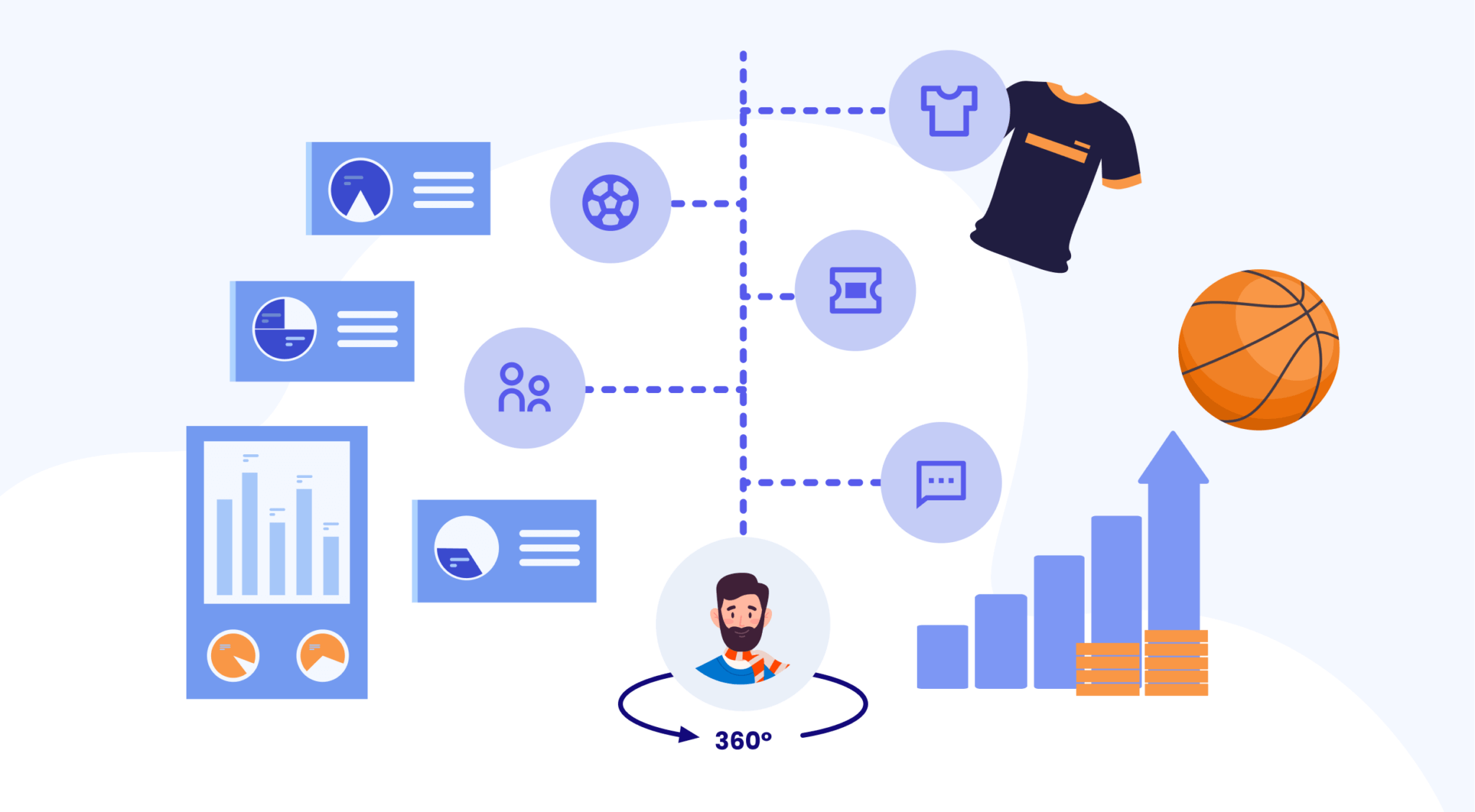
What do we mean when we refer to a hyper-personalized sports marketing campaign? And why is it so important that sports organizations adopt these types of campaigns?
In this blog post, we will be covering:
- What personalization means
- Why personalization is crucial
- The key ingredient, and challenge, to hyper-personalization
- How you can create a successful hyper-personalized sports marketing campaign
Let’s jump right in!
Before we dive right in...
Subscribe to our blog today to ensure that you never miss valuable posts such as this one. We are passionate about helping sports organizations deliver a world-class fan experience, because better fan experience means better business. So why not use this opportunity to the fullest?

What is personalization?
Alright, so what exactly is personalization? Well, as the name entails, personalization refers to the process of making something relevant for a specific person or group. According to the Cambridge Dictionary, personalization is:
“The process of making something suitable for the needs of a particular person.”
– Cambridge Dictionary
And when it comes to your sports organization, there are many channels and platforms where you can deliver hyper-personalized experiences to your fans, such as:
- In-stadium
- Website
- App
- OTT streaming service
- Social media platforms
- Exclusive newsletter
- Community Group
…and the list can indeed be longer.
But to give you a few examples, you could for instance personalize marketing emails depending on which fan you are targeting. Another example would be a personalized offer or coupon that you offer your fan when they are browsing your online merchandise store. Or, you could target a specific fan in the stadium, with for example a nice deal for food and beverages, and maybe even a personal greeting from their favorite team player.
As you can see, there are many different channels and places where you can deliver hyper-personalized communications and interactions to your fans. But why exactly does personalization matter so much to sports organizations and organizations overall?

To learn more about why personalization is crucial, check out our article:
Hyper-personalizing fan experiences in sports>>
Why is personalization crucial?
The answer to this question lies in the changes in fan behavior as a result of digitalization. Basically, the digital evolution has made it possible for your fans to watch and interact with sports content beyond the stadium and standard TV forecasting. Now instead, more and more fans are choosing to watch and interact with sports content from their preferred channels, platforms, and device types.
Let’s take a look at some stats from a study conducted by Performance Communications and Canvas8, which shows the following results:
- 73% of fans say it’s important to access content whenever they want
- 83% said they are interested in off-season sporting content
- And when asked where fans have accessed content:
- 52% said work
- 44% on the commute
- 14% at either a wedding or funeral
- 25% on the toilet
And when it comes to the frequency with which fans are accessing sports content across different platforms, check out the table below:

As you can see, topping the list we have websites, social media, and smartphone apps.
Long story short, your fans want to watch and interact with sports content wherever they are and whenever they want. And it doesn’t stop there. Because in today’s day and age, your fans also expect this content to be tailored to their specific wants and expectations. In other words, your fans want to receive experiences that are:
- Personal, relevant, and engaging
- Delivered in their preferred channel or platform
- At the right time (basically, whenever they want it)
And these expectations should not be treated as nice-to-haves, but rather as the new (or not so new) standard that fans have set for sports organizations. And those sports organizations that ensure they adapt to these wants and expectations will, indeed, reap many benefits, such as:
- Increase in revenue
- Improved fan experience
- Higher fan loyalty
- Increase in fan lifetime value
- Higher ROI on marketing activities
- Higher marketing effectiveness
- Adopt an approach that is future-proof and sustainable
However, although targeting your fans with tailored and relevant content in their preferred channels is one of the keys to hyper-personalization, it is just one piece of the equation. Because there is another factor that is crucial if you want to create and deliver successful hyper-personalized sports marketing campaigns.
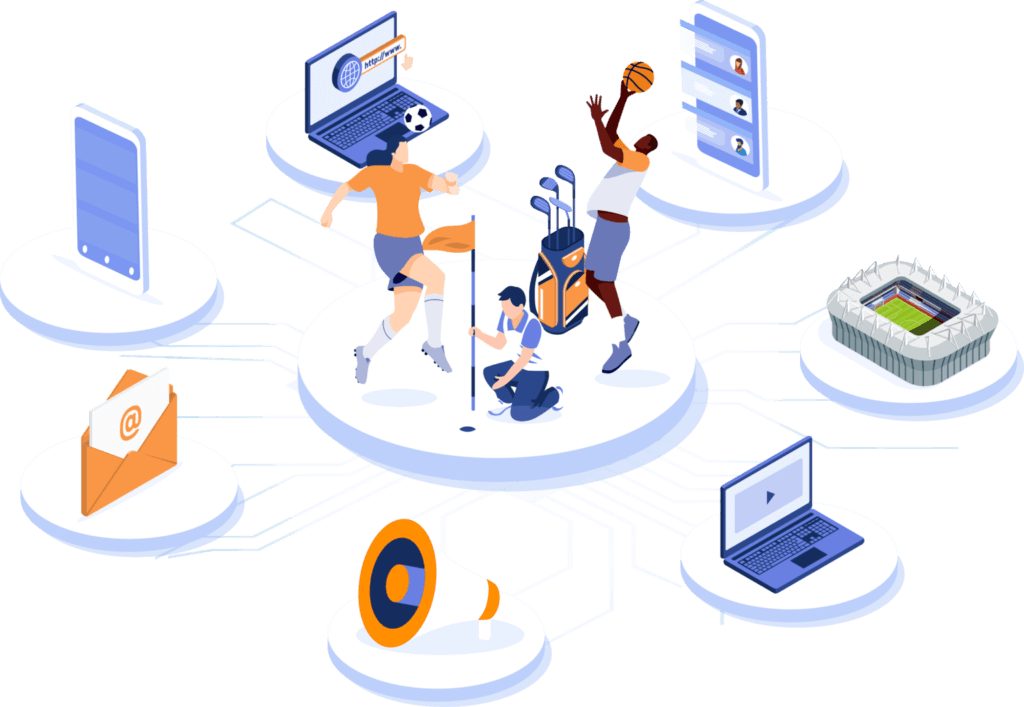
The key ingredient, and challenge, to hyper-personalization
Let me ask you a question. If you were to send an email to a specific fan, how would you go about making it personal and relevant to them? Would it be enough to know their name? Or would you need to know something more about them?
The answer here is:
the more information you have about your fan, the more personalized and relevant your email will be to them.


“Effective fan engagement relies heavily upon having the best data possible to enable highly personalized interactions with fans.”
– Pete Giorgio | US Sports Practice leader at Deloitte
So, based on this information, what is the key ingredient to delivering hyper-personalized sports marketing campaigns to any fan?
Well, data, of course.
And the best part is that you have a bunch of it. Where? Well, a bit here and there. But to give you a few examples, you might have data about your fans stored in your:
- Ticketing system
- Point of Sale (POS) system for in-stadium food and beverage purchases
- Online POS or e-commerce system for your merchandise
- Social media platforms
- App
- OTT streaming service platform
- Newsletter and mailing lists
- Event sign-up lists
All good right? All you need is to collect all of this data about your fans and create some personalized experiences. Well… not quite. As you might have noticed, your data happens to be, indeed, spread out across many different online and offline sources. What’s more, you might not even have access to some of this data.
Fortunately, there is a way for you to make this not feel like a humongous and even impossible task.
How to access your data easy-peasy
Yes, the good news is that there is a way to remove this hassle of having data spread across different systems. And that is by collecting it and unifying it in one single place. And this is precisely what Sports CDPs have been built for. With a Sports CDP, you are able to collect and centralize all your data. A CDP is built to handle any type and category of data.
To make this more concrete, let’s try to visualize this for a second. Say you have a fan that:
- Bought tickets to your last three games
- Also bought snacks and beverages at each game
- Signed up for your newsletter
- Follows you on social media
- Subscribed to your OTT-streaming platform
- Downloaded your app
As you can see, there are several places where you can collect data about your fan. What a CDP then lets you do is collect all this data and connect it to the specific fan in question. In other words, this means that a Sports CDP allows you to create:
A 360-degree view of each fan
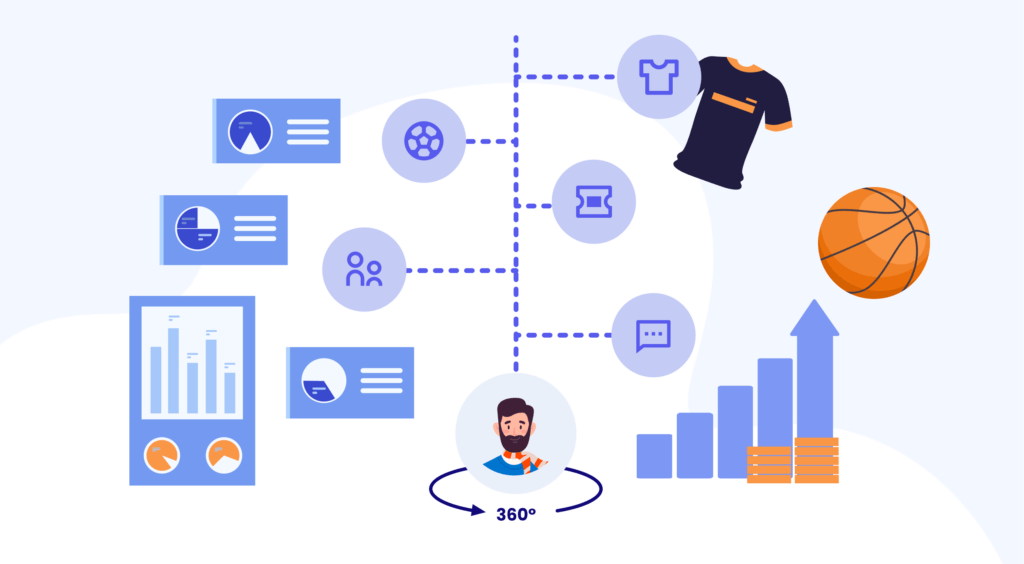
By collecting and centralizing all your data into a CDP, you are now able to create a rich and holistic view of each and every supporter. What this means is that, by collecting and unifying all your data, you are able to understand each supporter on a deeper level, such as their specific:
- Characteristics – such as age, gender, family size, and geographic location
- Preferences – for instance a fan’s favorite team player or merchandise products
- Behaviors – like their ticket purchase frequency and overall purchase habits
As you most likely can tell, these insights are crucial to have for personalization. Because these insights are the key to creating hyper-personalizazed interactions and experiences for your fans and supporters in their preferred channels and platforms.
Check out the image below to see a nice illustration of this whole process:
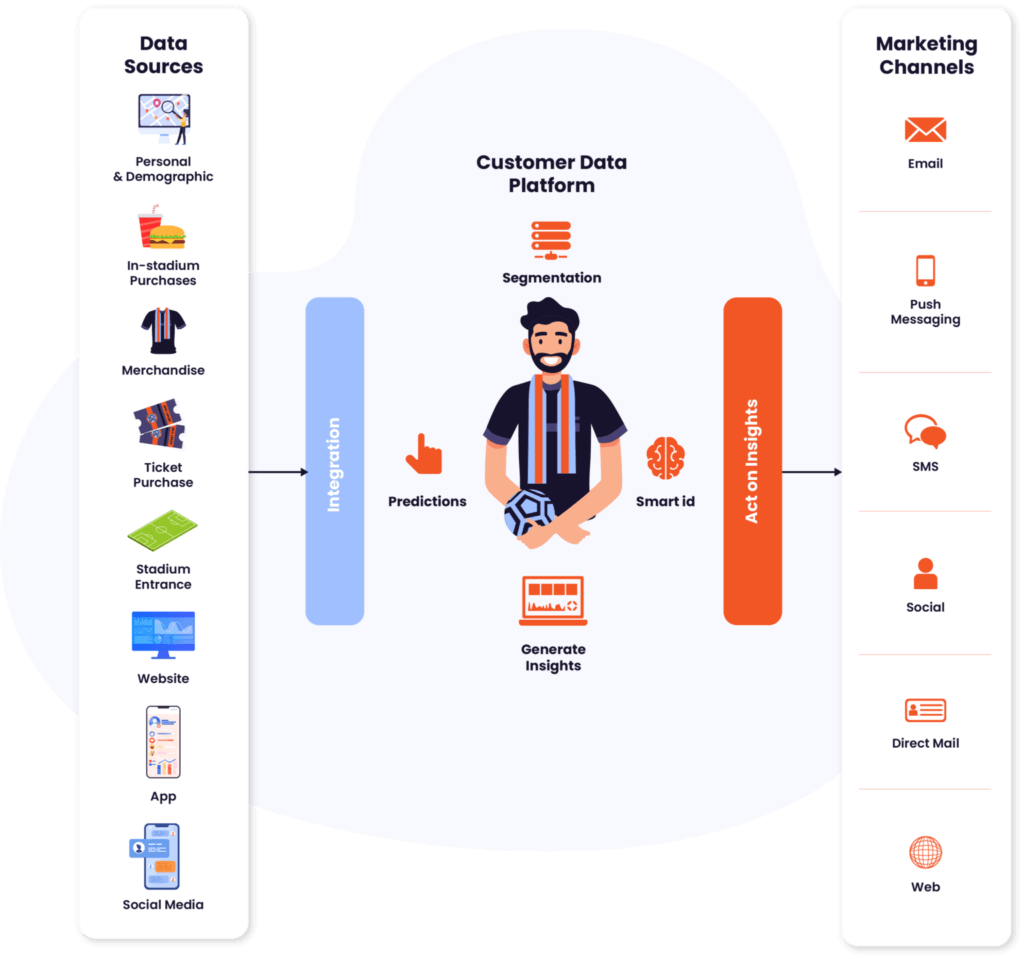
Moreover, a Sports CDP ensures that your data is updated the moment something changes, such as your supporter attending a sports event or game, buying merchandise from your online store, streaming content on your OTT platform, or signing up for your newsletter. In other words, you can rest assured knowing that your data will always be up to date.
So that’s the theory of it all. But let’s have a look at a practical example of how a Sports CDP can help you deliver successful hyper-personalized sports marketing campaigns.
How AIK football club generated 6 figures on one hyper-personalized sports marketing campaign
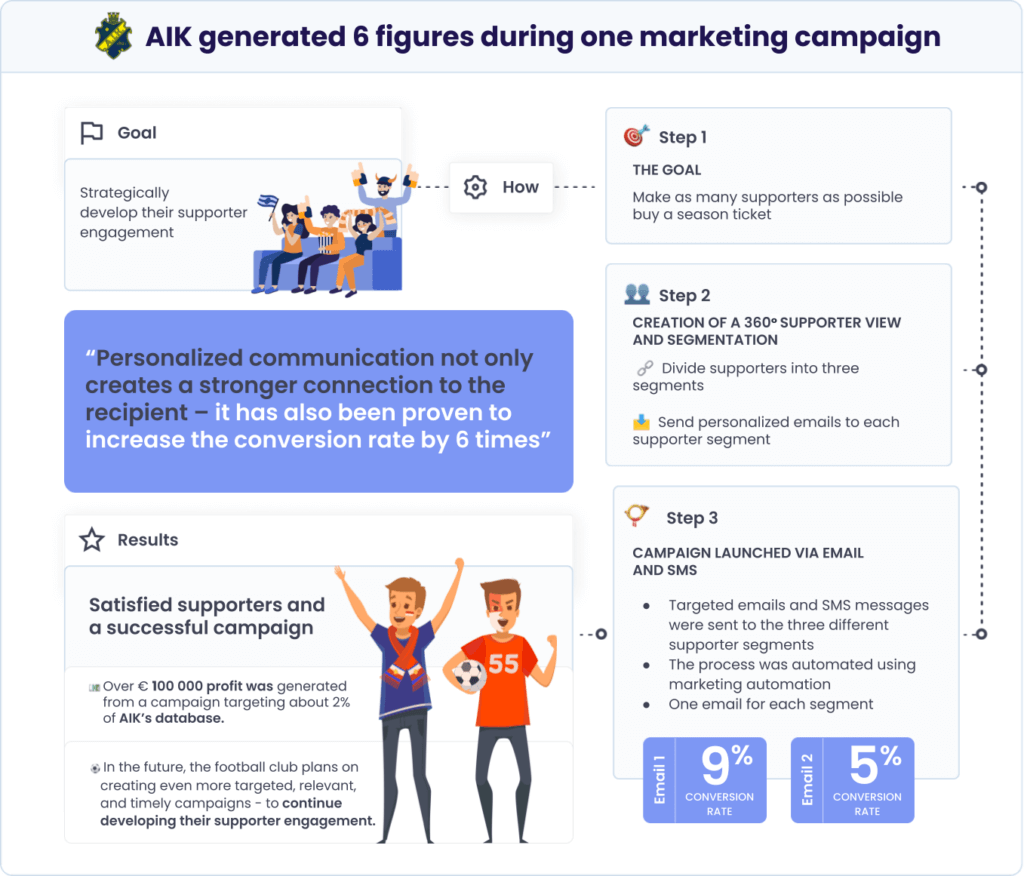
AIK is a football club competing in the top league of Swedish football. One day, they decided on a goal, which was to strategically develop their supporter engagement. So to achieve this goal:
- AIK leveraged the Data Talks Sports CDP to gain a 360-degree view of each fan and understand their unique characteristics, preferences, and behaviors.
- Once they knew this, they could segment their fans into different groups based on insights about their fans.
- Then, they could target them with hyper-personalized email and SMS campaigns.
What was the outcome? Well, not only did AIK see a surge in supporter engagement, but they also managed to yield €100 000 profits. And guess what! They were only targeting 2% of their fanbase!
So you see, having enough data and insights about your fans can make all the difference in creating a successful hyper-personalized sports marketing campaign.
And you can achieve this too.
How you can create a successful hyper-personalized sports marketing campaign [using a Sports CDP]

Step 1: Set your campaign goals [based on your data analysis]
The first and most important step to creating and executing a successful hyper-personalized sports marketing campaign is to set clear goals. These could be for instance:
- Increase ticket sales within a certain fan segment
- Sell more food and beverages
- Upgrade a fan segment to a higher spending level
- Sell even more merchandise
- Enhance fan engagement and loyalty
When using a Sports CDP, you can choose and set these goals directly on the platform. In the Data Talks Sports CDP, you can define your goals by specifying which Key Performance Indicators (KPIs) you want to measure. By doing so, you can measure how well you are performing on your chosen goals. Moreover, data about your fans in the Sports CDP will help you understand which KPIs you should focus on.
By setting your goals from the get-go, you will much more easily be able to segment your fans into groups based on their characteristics, preferences, and behaviors.
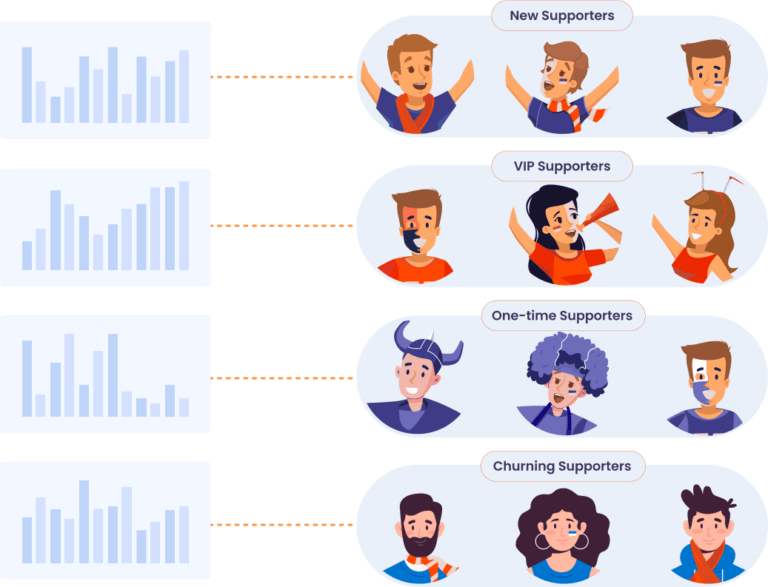
Step 2: Segment your fans into groups based on your goals
Now that you have set your goals, the next step is to decide how you want to segment your fans. For this step, you can take a look at the list of different types of segmentation that we listed in this blog post about fan segmentation.
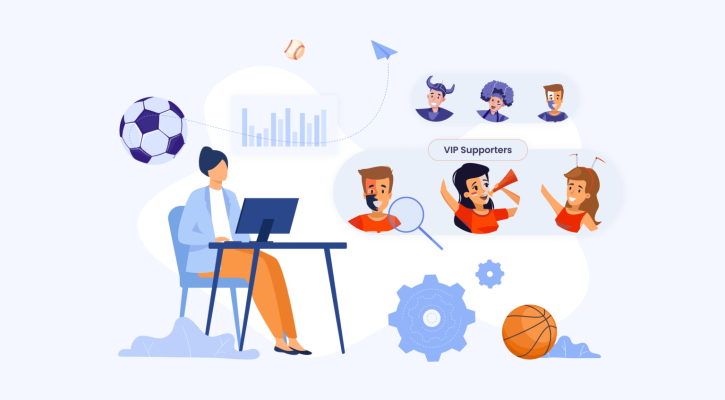
Learn more about fan segmentation in this blog post. >>
If you choose to create a real-time segment, then this means that your segment will be updated on a regular basis with new fans that share the same characteristics, preferences, and behaviors. So if you for example create a segment dedicated to your most high-level fans, then new fans that share the same characteristics will be added continuously. And all of a sudden, your most loyal fan segment has grown.
Creating a fan segment should not feel complicated. If it does, then what you are dealing with is most likely not a CDP…
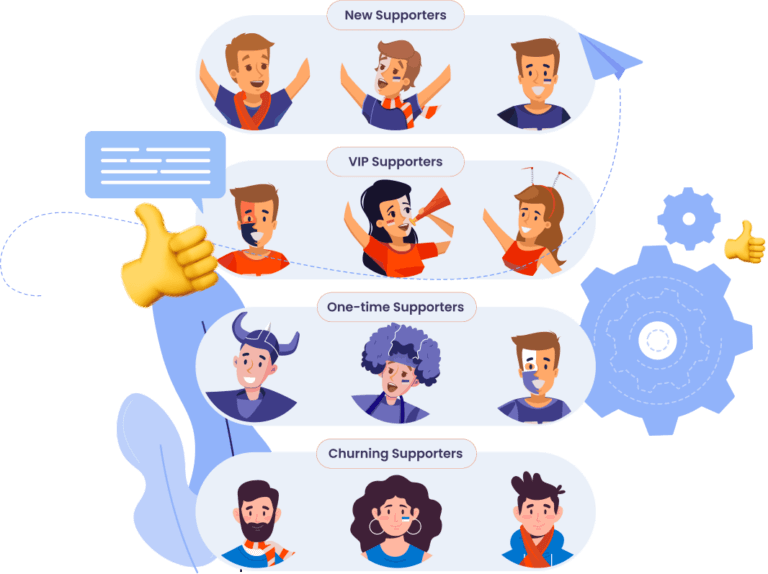
Step 3: Target your chosen fan segments with hyper-personalized campaigns
Once you have created your fan segments, the next step is to target them with hyper-personalized campaigns. This can be achieved either from the CDP itself (if the CDP has campaign capabilities) or via other tools and systems. And in the Data Talks Sports CDP, you can do both:
From Data Talks Sports CDP:
In the Sports CDP, you have the option to create and act on your segment either via email or SMS. You can easily create your campaigns using their respective building tools. And this is easily done through drag and drop.
From other tools and systems:
You can also easily share your segment in the CDP with other tools and systems, such as:
- Marketing Automation tool
- CRM system
- Social media
- OTT-platform
Then, you can deliver messages and interact with your fan segment via different channels, such as:
- SMS
- In-app push notifications
- Social media
- Direct mail
- Your website
And any other channel relevant to your sports organization.
No matter what tool or channel you choose, with a Sports CDP you can always deliver marketing activities to your fan segment that are personalized, relevant, and engaging in real-time.
And now, on to the final step…

Step 4: Analyze your results and optimize for future hyper-personalized sports marketing campaign
The final, but very important, step is to analyze your campaign results. This could be, for instance, email open rate och SMS click-through-rate. You want to compare these results with the baseline you had in the beginning. By doing so, you will be able to improve and even optimize your future marketing campaigns.
In the Data Talks Sports CDP, you receive real-time insights about how well your fan segments are performing on the goals (KPIs) you have set. These insights can easily be found in your real-time analytics dashboard, which you create and design according to your specific needs. By gaining these new insights about your different fan segments, you can improve your goals (KPIs) and make necessary adjustments to your fan segment to achieve those goals.
Once you have made the necessary adjustments, you can target your fan segment again – only this time, even better than before.
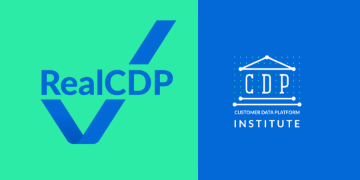
Data Talks CDP is proudly a certified CDP
Conclusion
As we have seen throughout this blog post, personalization is not a nice-to-have, but rather an expectation in today’s digital world. Fans require that you adapt to their specific wants and expectations, no matter when and where they decide to interact with your sports organization and sports content.
So, in order to meet these wants and expectations, sports organizations need insights about their fans. And the more data you have, the better you will be able to hype-personalize your sports marketing campaigns. However, to achieve this, sports organizations also need to ensure that they can access their data in the first place; a seemingly daunting task for sports organizations that have their spread out across multiple different sources. Fortunately, a Sports CDP has been built to solve this specific challenge and allow sports organizations to:
- Access all of their data in one place
- Gain a 360-degree view of each fan
- Act on these insights and deliver hyper-personalized sports marketing campaigns
Now, check out our free demo and see how you can create your very own hyper-personalized sports marketing campaigns today.
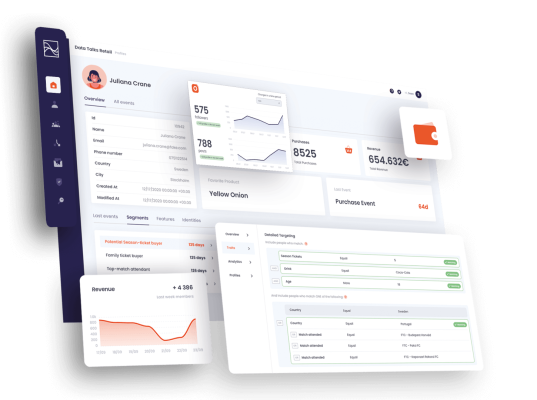
Leave a Reply